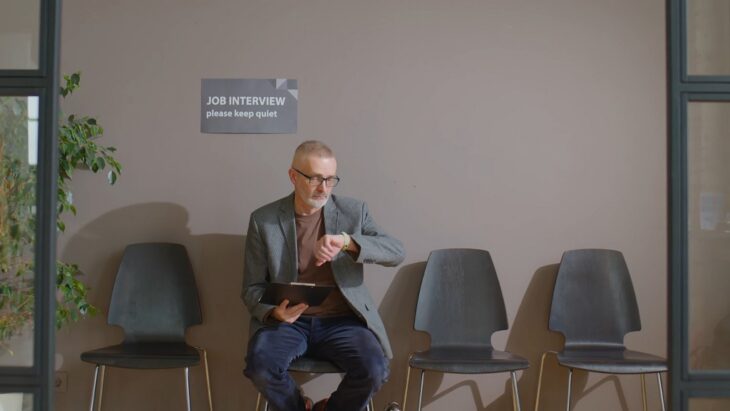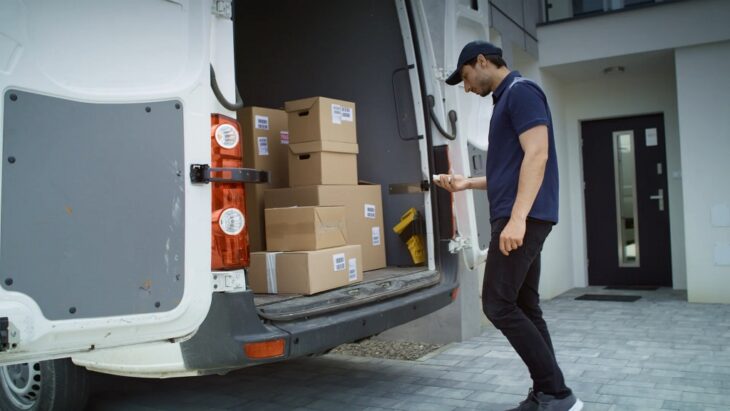The best time to start a side hustle is when your finances are stable, your schedule allows for consistent extra work, and market trends suggest healthy demand for what you plan to offer.
Right now, as of 2024–2025, record numbers of people in the US and UK are earning supplemental income through side gigs – but success rates are highest among those who plan carefully, start during periods of job stability, and choose hustles that align with growing consumer or business needs.
According to a 2024 Zapier report, 61% of Americans either have or are considering a side hustle, but only 35% of those who “jump in” impulsively stick with it after a year.
Table of Contents
ToggleQuick Self-Assessment – Should You Start a Side Hustle Now?

| Question | Best-Case Indicator | Red Flag Indicator |
| Are your main finances secure? | 3–6 months’ expenses saved, steady job | Living paycheck to paycheck, no buffer |
| Do you have 5+ hours/week free? | Yes, regular time blocks | No, the schedule is already overloaded |
| Do you need urgent income to pay bills? | No, extra cash is a bonus | Yes, in immediate financial stress |
| Is your household supportive? | Yes, open discussion | No, tension or secrecy |
| Are you seeing trends in your target niche? | Yes, demand is rising or stable | No, shrinking or saturated market |
| Are you willing to learn new skills? | Yes, actively learning | No, only want “easy money” |
If most of your answers are in the “Best-Case” column, it’s likely a good time to start. If you’re mostly in the “Red Flag” column, pause and focus on stabilizing your core finances and commitments first.
Economic Timing Factors for Side Hustles (2022–2025)
| Factor | Current Trend (2025) | Why It Matters |
| Unemployment Rate | US: 4.1%, UK: 4.4% (moderate) | Side hustles spike when the job market is tight |
| Inflation | US: 3.3%, UK: 3.7% (still high) | Higher living costs drive extra income needs |
| Gig Economy Growth | Up 14% YoY globally | More platforms and freelance demand |
| Interest in Side Gigs | 61% of US adults (Zapier) | More social acceptance, easier to start |
| Typical Startup Cost | $50–$500 (most digital gigs) | Lower barrier to entry than pre-pandemic |
1. Unemployment Rate

While unemployment rates in both the US and UK are not at crisis levels (US: 4.1%, UK: 4.4% as of Q2 2025), they are noticeably above the lows of 2022–2023. Moderate unemployment historically correlates with a rise in side hustle activity, not out of desperation, but as a hedge against uncertainty.
According to the Federal Reserve Economic Data (FRED), every 1% uptick in unemployment since 2015 has been matched by a 9–12% increase in gig platform signups within the same quarter. This suggests that workers now see side hustles as a buffer, even when their main jobs remain secure.
2. Inflation
Both US and UK inflation remain above central bank targets (US: 3.3%, UK: 3.7%), after peaking above 8% in 2022. While no longer at crisis highs, these rates are high enough that real wages have stagnated or fallen for most workers. This dynamic is a core driver for side hustling.
According to Bankrate’s 2024 survey, 62% of Americans with a side hustle cite “covering basic expenses” or “coping with price increases” as their primary motivation – a trend that’s grown even as the S&P 500 has hit new highs, showing that rising markets don’t always ease the pressure on everyday budgets.
Similarly, UK respondents to a NatWest 2024 survey listed “inflation” as the #1 reason for gig work.
3. Gig Economy Growth
A 14% year-over-year (YoY) growth rate in the global gig economy (data: Mastercard’s Gig Economy Tracker, 2025) means more platforms (e.g., Upwork, TaskRabbit, Deliveroo, Fiverr, Amazon Flex) and greater demand for freelance and project-based work.
The expansion isn’t limited to delivery or ride-share services; digital freelancing, e-commerce, and knowledge work are all major contributors. In 2025, over 35% of new gig workers are joining “white collar” side gigs, according to McKinsey. This diversity increases the chances of finding a hustle that fits your skills and schedule.
4. Interest in Side Gigs
Social acceptance is at an all-time high: 61% of US adults (Zapier, 2024) and nearly half of UK adults have a side hustle or plan to start one in the next 12 months. The stigma around “needing a second job” has faded; now it’s often seen as entrepreneurial or financially savvy.
Google Trends data (2023–2025) shows a 300% increase in searches for “how to start a side hustle” since 2020, reflecting this mainstream shift.
5. Typical Startup Cost
Pre-pandemic, starting a business usually meant thousands in up-front costs. The proliferation of digital gig opportunities – freelance writing, virtual assistance, e-commerce (via Etsy or Shopify), online teaching – means most new hustles now require under $500 to launch.
According to Shopify’s Future of Commerce 2024 report, 70% of first-time online sellers start with less than $250 in initial outlay. This low barrier makes experimenting less risky and enables more people to “test and learn” without risking core savings.
When Not to Start a Side Hustle
Caution flags include:
- You’re in a financial crisis (side hustles are slow to ramp up, not a quick fix)
- You have no free time, or health/family issues need your attention.
- ..You expect instant, “passive” income (studies show most side hustles take 3–12 months to be profitable, and <10% generate true passive income)
- The market for your idea is shrinking (e.g., launching a ride-share side gig during a mass transit boom)
Popular Side Hustle Types and Their 12-Month Survival Rates
| Side Hustle Type | Typical Startup Cost | Avg. Weekly Time | Survival Rate (12 mo.) | Notes |
| E-commerce (dropship/print) | $200–$800 | 6–12 hrs | 48% | Higher if niche-focused |
| Freelance (writing, design) | $0–$300 | 5–15 hrs | 59% | Best if skill-based |
| Rideshare/delivery | $50–$250 | 8–25 hrs | 41% | Dependent on local demand |
| Tutoring/coaching | $0–$100 | 4–10 hrs | 63% | Higher if credentialed |
| Content/Influencer | $0–$300 | 10–20 hrs | 24% | Very competitive |
| Home/handyman services | $100–$700 | 6–15 hrs | 53% | Seasonal fluctuations |
E-commerce (Dropshipping/Print on Demand)

Startup costs are moderate, mainly inventory samples and marketing. Nearly half (48%) survive at least one year. Success is much higher for those who build a clear brand or serve a niche; general stores fail quickly.
Shopify reports that focused niche stores can double the average survival rate.
Freelance (Writing, Design, Programming, etc.)
With no inventory and only basic tech needs, freelance gigs are cheap to start. The 59% survival rate reflects that skilled workers (writers, designers, web devs) can pivot among clients, build portfolios, and raise rates.
According to Upwork’s 2024 report, freelancers with existing networks see the fastest growth.
Rideshare/Delivery

Startup costs are just licensing, insurance, and (sometimes) equipment. These gigs are easy to start but have the lowest satisfaction and a 41% survival rate.
Many exit due to low margins, wear on vehicles, and high competition. Local market saturation is a common reason for quitting (Uber 2023 Driver Insights).
Tutoring/Coaching
Online and local tutoring/coaching require minimal upfront spending – just credentials, advertising, or a platform fee. The 63% survival rate is the highest in the table.
This is because personal expertise, word-of-mouth, and repeat business support long-term growth. The pandemic accelerated demand for online tutors, a trend still strong in 2025 (Indeed Education Trends).
Content/Influencer
The lowest survival rate (24%) is due to high competition, low pay for most, and slow audience growth. Only those with a clear brand, strong content pipeline, or existing network break through.
YouTube’s 2024 Creator Economy Report found that 97% of new channels earned under $500i in their first year.
Home/Handyman Services
Startup costs are moderate (tools, insurance, marketing). The 53% survival rate reflects steady demand but also seasonal highs and lows. Repeat local business is key; those who focus on reliability and customer reviews do better.
Signs the Timing Is Right – According to Studies
- Personal Finances: People with a financial buffer are 3x more likely to succeed.
- Skill Fit: Those who start in a field they know are 45% more likely to stick with it a year later.
- Market Trends: 2025’s fastest-growing gigs: AI consulting, online tutoring, web development, and eco-friendly product reselling.
- Motivation: Side hustlers who start out of curiosity or long-term goal-setting (not desperation) show a 2x greater one-year survival rate.
Timing Triggers

| Good Signs | Bad Signs |
| You’re bored/stagnant in your main job | You’re overwhelmed/stressed in your main job |
| You have a marketable skill or a unique hobby | You’re copying others blindly |
| People already ask you for your product/service | No interest when you offer your idea |
| Industry trends point to new/growing demand | Industry is being disrupted/automated |
| You’ve mapped a clear schedule and plan | No plan – just “try and see” |
The best timing is often when you have slack in your schedule and “natural” demand for your skills, rather than waiting for a financial emergency.
Practical Steps: How to Assess Your Timing
- Audit your calendar for real, regular availability (no hustling on hope alone).
- Check your emergency fund – 3–6 months is ideal.
- Test demand with small pilots or pre-sales, not just surveys.
- Watch for market “green lights” (rising Google Trends, more social mentions, job boards with gig listings).
- Talk to others in the field for realistic income and time expectations.
Conclusion
The best time is when your finances are stable, your calendar has wiggle room, you spot real demand for your offer, and you’re motivated by growth, not panic.
Right now, with inflation squeezing budgets but flexible work more accepted than ever, 2024–2025 is a strong period for side hustles – if you plan, research your niche, and start with realistic goals.
Success comes not from timing the “perfect moment,” but from stacking the odds in your favor with preparation, skill, and market insight.



